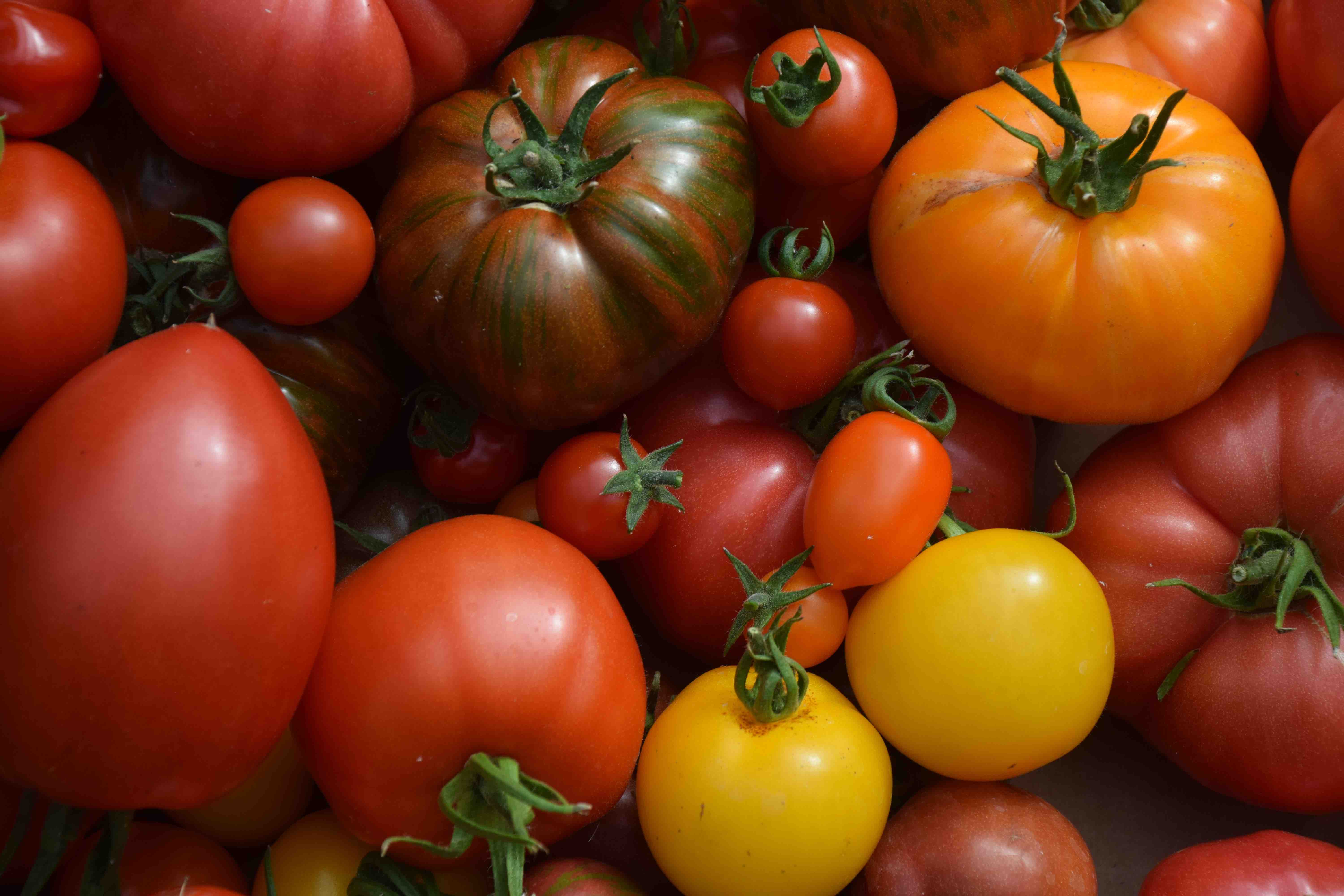
It seems to be in our genes that we love to grow tomatoes. Even people who have no pretensions to be gardeners will to grow tomatoes at one time or another and there can be few patios around the country without a couple of plants. And why not? Tomatoes are potentially easy to grow and, picked fresh off the plant, they are much better than shop-bought fruit.
But growing your own tomatoes is not quite plain sailing. It is a little late to sow seeds now so you will need to buy some plants if you want to make a start. Before I get into any technicalities I want to cover a few basics.
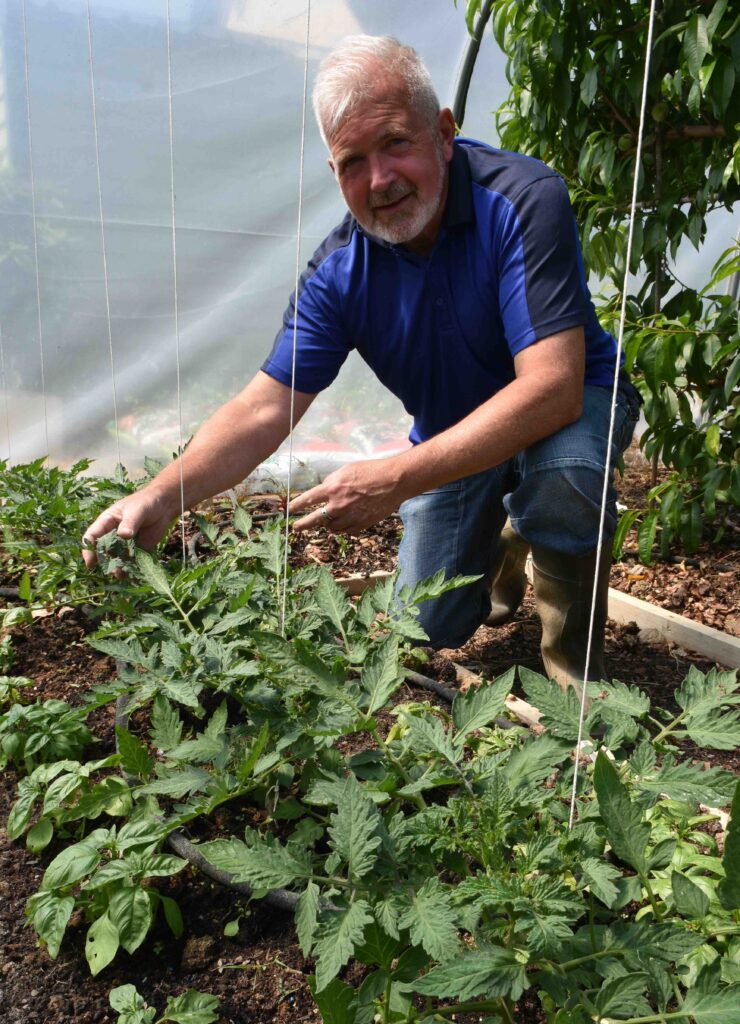
Where
You can grow tomatoes outside or in a greenhouse or polytunnel. Outside crops do stand a (high) risk of being killed by ‘blight’ in late summer. You can get resistant varieties but they are not immune. Growing in a greenhouse, polytunnel or mini-patio-greenhouse keeps the leaves dry and largely prevents blight.
A sunny patio is perfect to grow a few plants in pots in a plastic mini- greenhouse.
In what
You can grow in garden soil, in polytunnel beds or in pots, growing bags and even hanging baskets. In pots use multipurpose compost. The biggest problem with tomatoes in containers is that they will dry out in summer, causing damage to the fruits. If you grow in pots you MUST water frequently and you will need to feed. And yes, tomato fertiliser is the one to use. If planting in growing bags it is usually best to plant two per bag rather than three. This means they have more root room and they will not dry out as quickly on a hot summer’s day – yes they will come eventually! .
Which
Quite apart from the different colours and shapes of tomato fruits, you need to know what your ‘plant’ is going to do. There are two main kinds of tomato plants. I need to explain these but stay with me!
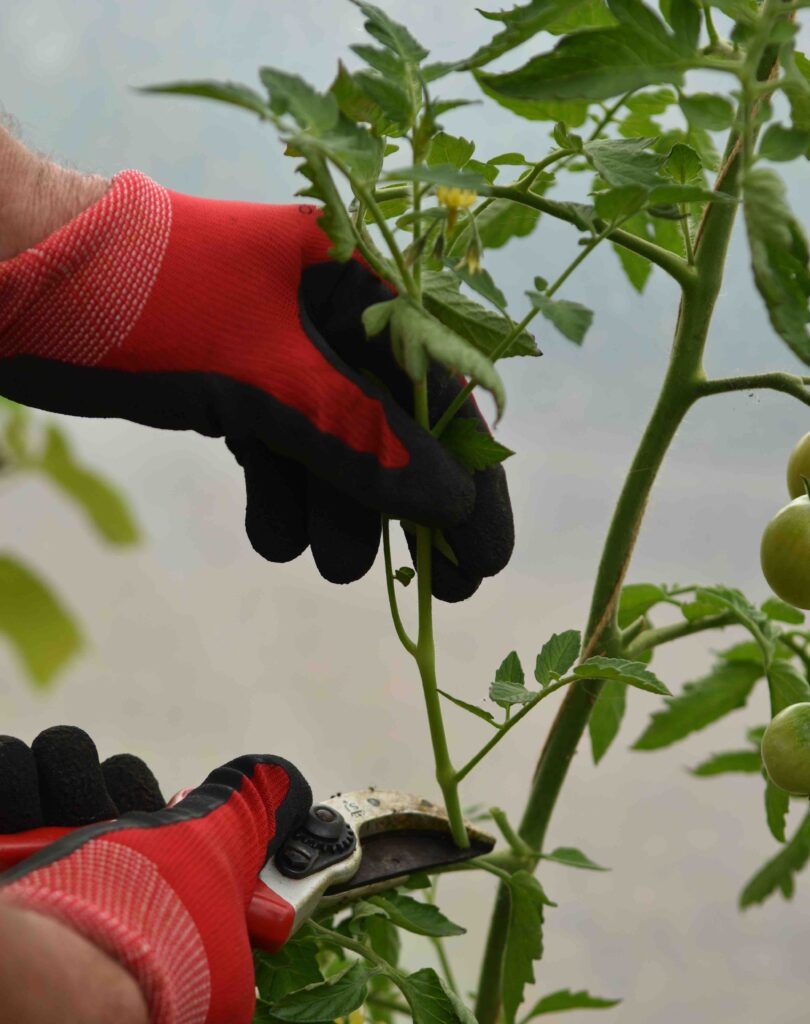
Indeterminate. These are also called ‘cordon‘. The name simply means that the plants have an indeterminate size. The growing tip keeps on growing on and on. So, in theory, a plant could be 1m, 2m, 4m, or 10m tall eventually. This is the most common type. The plants have to be supported and grow upwards, with trusses (clusters) of flowers, and then fruit, along their length. In our short summers we usually pinch out the tip at about 1.5m tall because fruits that form in September simply will not ripen before winter.
These plants produce side shoots and these must be cut off as soon as they are seen. If they are allowed to grow the plants become a tangle of growth with few ripe fruits.
Determinate. Also called bush tomatoes. These have a different growth habit and the main shoot ends in a cluster of flowers and then fruits. As this happens, side shoots grow from lower on the stem. Each of these ends in a cluster of flowers too so the plants form a mound of fruits. Do not remove the side shoots from these.
The advantage of these is that they tend to crop early but they don’t crop for long. Also there is a limited range of fruit shapes and colours – most are small and red. But they are ideal for hanging baskets and patio pots.
How
Tomatoes will not withstand frost so it may be a bit early to plant outside but you can plant now in a greenhouse or polytunnel. Plant in pots or beds or growing bags.
When the plants start to grow they will need support. You can tie them to canes or you can buy supports. In a greenhouse you may have bars that you can use to support strings which are the easiest way to support plants .
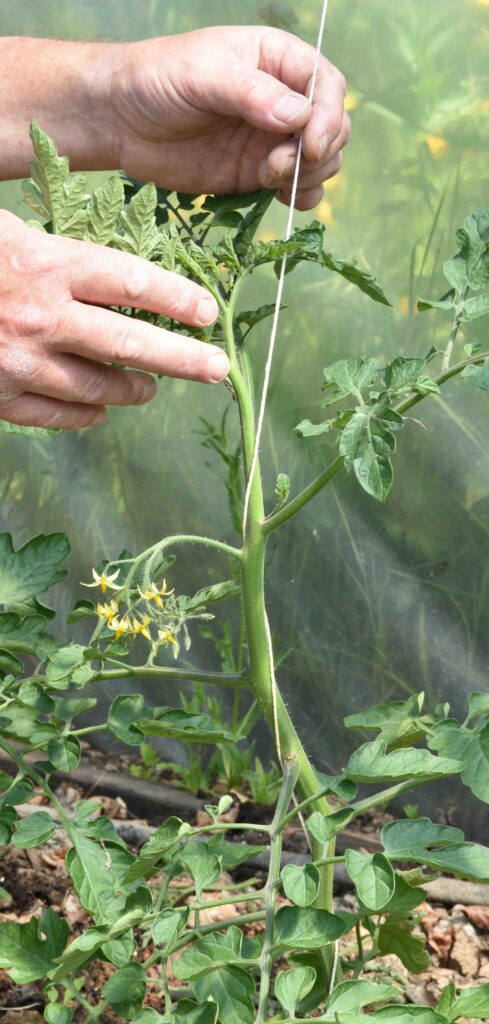
It is best to observe your young plants and to plant them out when they are showing flower buds in the tip. This encourages them to flower and crop as small plants. If you do not do this they can have a tendency to grow quite tall before producing their first flower cluster.
Keep your plants constantly moist. It is easy to do this when they are growing in beds but in pots or growing bags they can dry out easily, especially when the plants are tall. If they are allowed to wilt it is possible the fruits will be affected by blossom-end rot. This causes a sunken, black patch at the ends of the fruits. Constant moisture and using a tomato fertiliser, that contains necessary calcium, will prevent this.
You will need to feed once a week from the time the first flowers open.
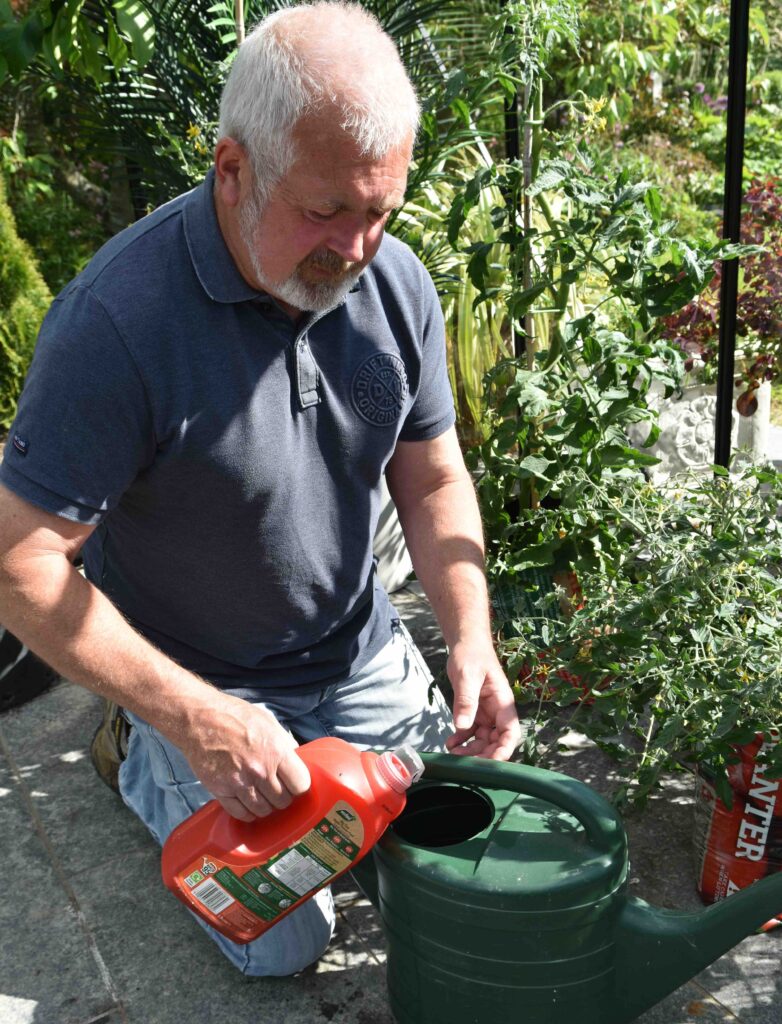
All we need now is some warmth and sunshine! Remember that it is warmth and not direct sun on the fruits that causes ripening. You can remove lower leaves later in the season if they turn yellow but do not remove lower leaves in early summer to expose the green fruits to sun. This can cause other problems and weaken the plants and it will not speed up ripening.
Weekly reminders
Feed or feed and weed your lawn. A lawn food on its own will provide nitrogen that has been leached out in the wet winter and encourage a strong turf that will be less likely invaded by weeds.
Deadhead tulips and leave them to die down naturally.
Weed your beds get them clear ready for summer flowers
Sow annual herbs such as dill, coriander, basil and chervil.